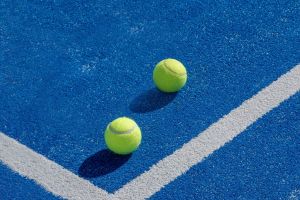Hydration during exercise is a crucial component of fitness and physical activity, directly impacting performance, recovery, and overall health.
Proper hydration strategies can enhance workout effectiveness, reduce the risk of injuries, and help the body meet its physiological demands during exercise.
This article will provide a science-based overview of the essential principles of exercise hydration, helping you better understand fluid management during physical activity.
The Role of Water in the Body
Water is one of the most important components of the human body, making up about 60% of body weight. It plays a vital role in maintaining various physiological functions. Water is not only involved in temperature regulation and the transportation of nutrients but also in waste elimination and fluid balance.
During exercise, the body’s metabolic rate increases significantly, and sweating and breathing contribute to fluid loss. If fluids are not replenished during exercise, dehydration, decreased energy, and lack of focus can occur. In severe cases, it may lead to heat stroke or exercise-induced exhaustion, which can pose serious health risks.
Principles of Hydration
1. Timed and Measured Hydration
The timing and amount of water intake before, during, and after exercise are crucial. About 30 minutes to 1 hour before exercise, it is recommended to drink 300-500 milliliters of water to ensure that the body is well-hydrated at the start of the workout.
During exercise, it is recommended to hydrate every 15-20 minutes with 150-200 milliliters of water to maintain fluid balance in the body. After exercise, it is important to promptly replenish the lost fluids, typically around 500 milliliters to 1 liter of water.
2. Avoid Overhydration
Although hydration is essential during exercise, excessive fluid intake can also pose risks, particularly "water intoxication" (hyponatremia).
When too much water is consumed without adequate electrolytes, it can cause a low sodium concentration in the body, leading to symptoms such as dizziness, nausea, and seizures.
3. Choose the Right Beverages
Hydration during exercise is not limited to plain water. For high-intensity or long-duration exercise, especially in hot environments, fluid intake should also address electrolyte loss. In these cases, sports drinks can be a good option.
Sports drinks contain electrolytes like sodium and potassium, which can effectively help restore the body’s salt balance and reduce muscle cramps and fatigue caused by electrolyte depletion. However, if the exercise is relatively short and the temperature is moderate, plain water is generally sufficient. For most daily exercisers, excessive consumption of sports drinks may lead to additional sugar intake, which can be detrimental to health.
4. Adjust Hydration Based on the Environment
Environmental temperature and humidity are significant factors that affect exercise hydration. In hot and humid environments, sweating increases, leading to a more rapid loss of water and electrolytes.
In such cases, hydration frequency and quantity should be increased. Conversely, in cold and dry environments, although sweating may be less, it is still important to hydrate regularly to prevent dehydration.
5. Avoid Excess Caffeine Around Exercise
Caffeine has a diuretic effect, increasing urine output and causing fluid loss from the body. Therefore, it is advisable to avoid consuming caffeine-containing beverages before and after exercise. If caffeine intake occurs, additional hydration should be considered to compensate for the fluid loss caused by its diuretic effect.
A well-planned hydration strategy can help maintain fluid balance, ensure good performance during exercise, and effectively prevent discomfort caused by dehydration. By following these hydration principles, you can make your exercise experience healthier and safer.


